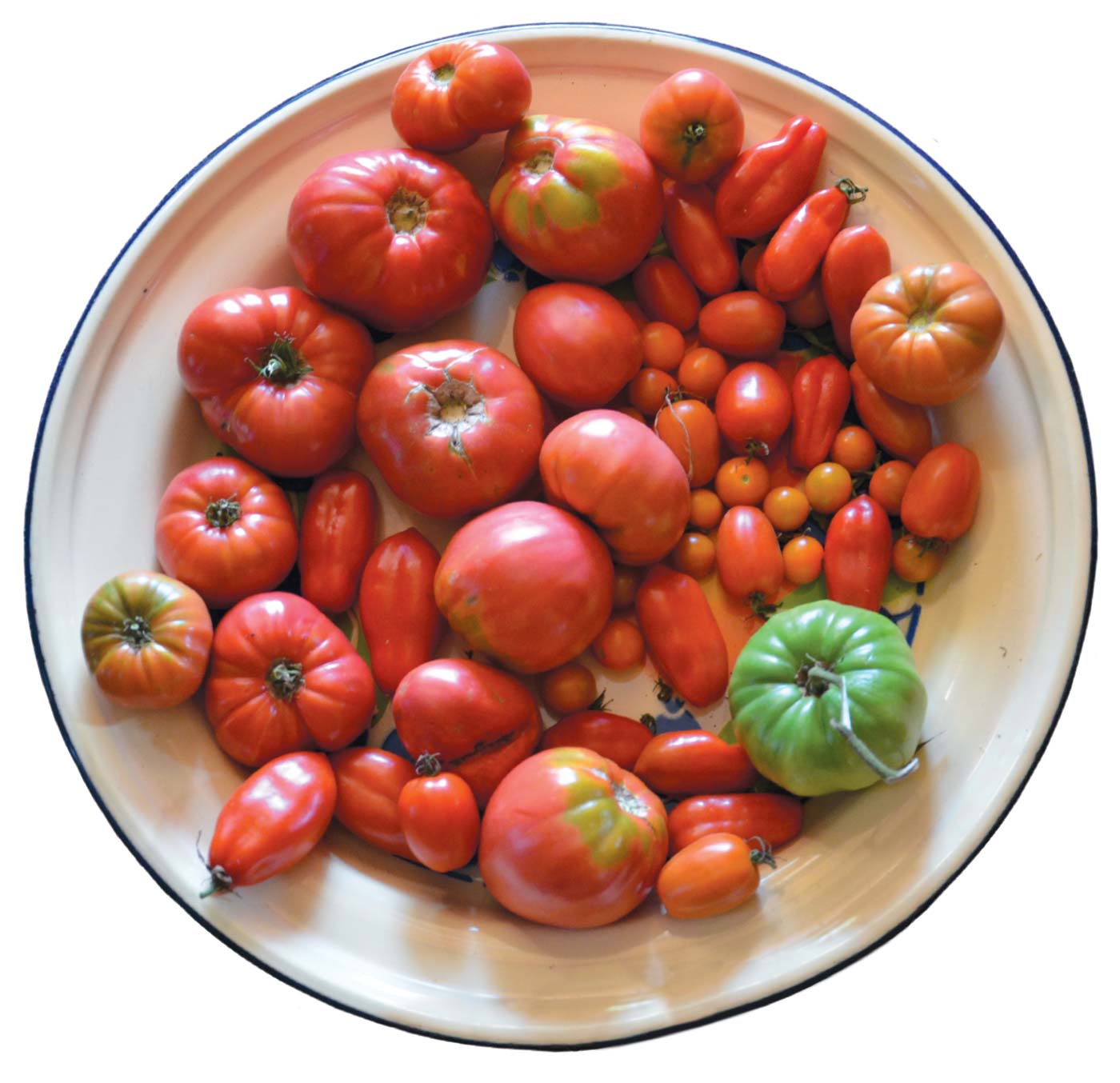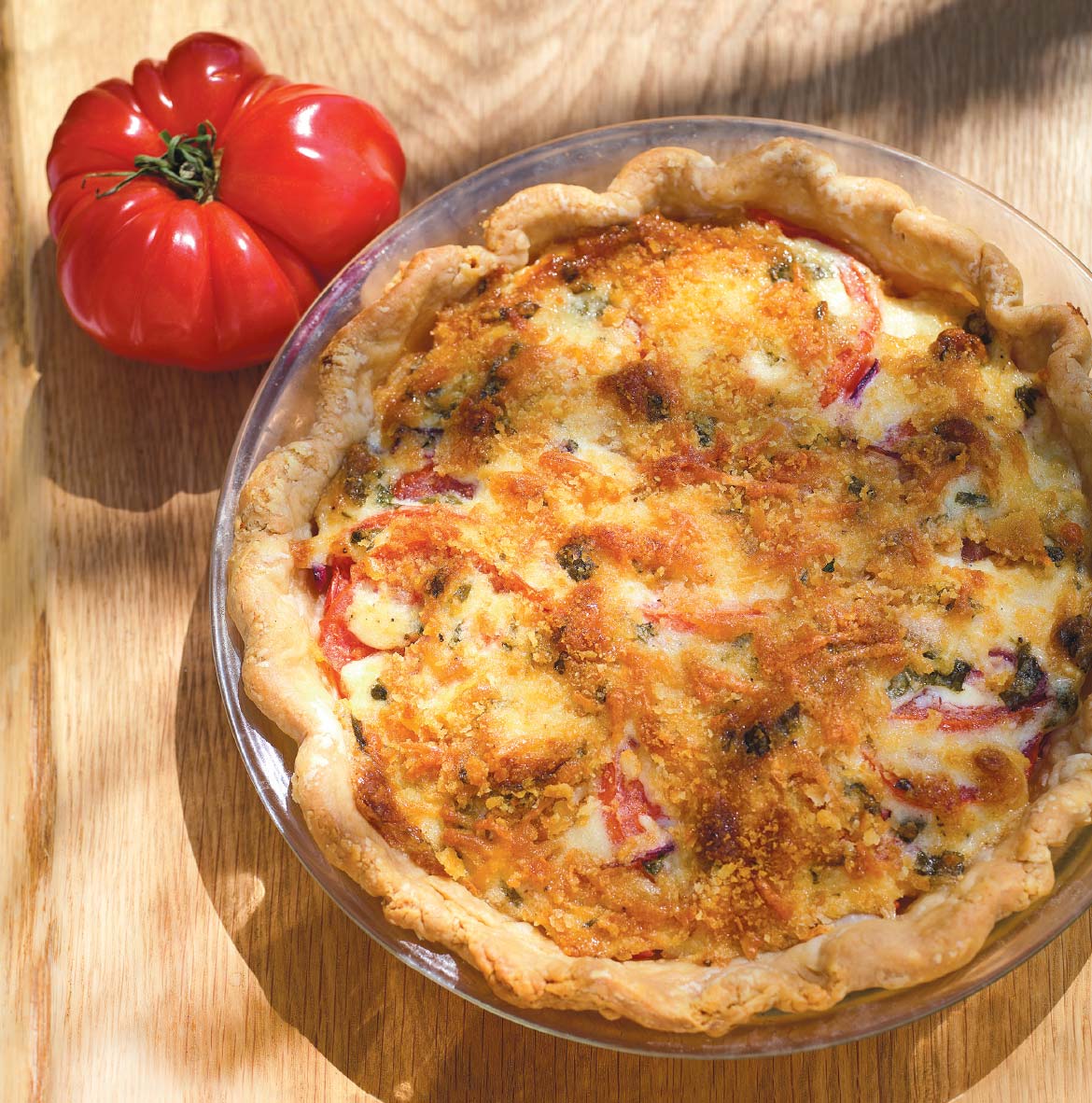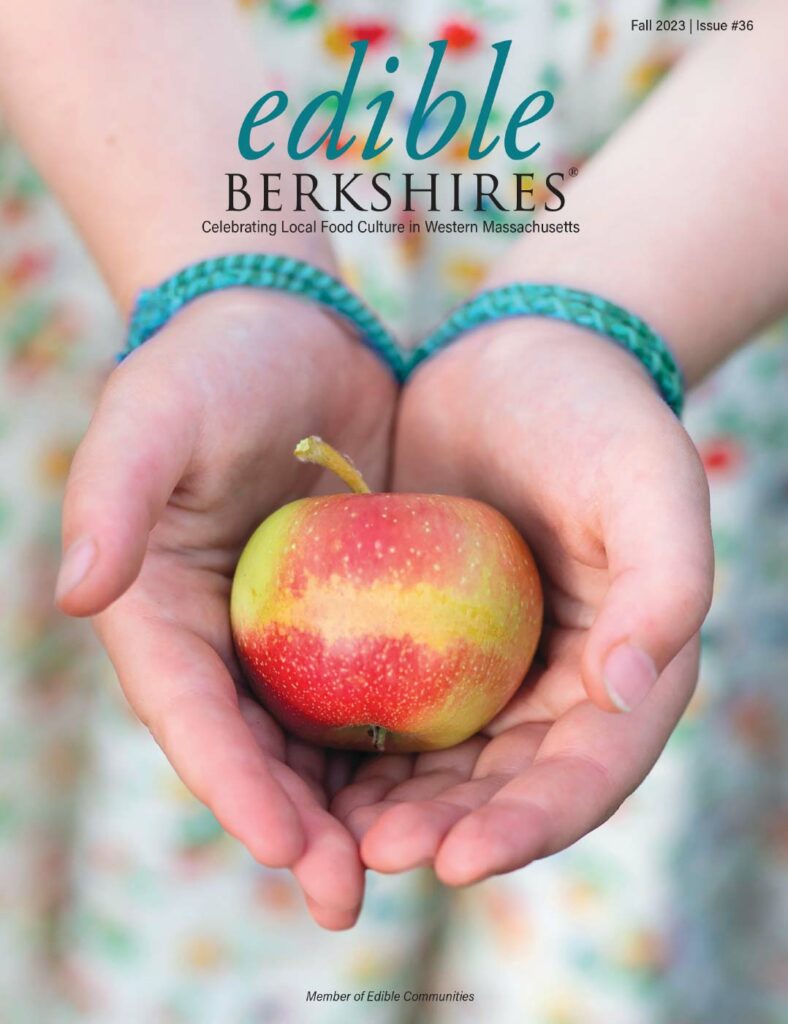
Nothing says summer like a ripe, juicy garden tomato. With a litt le time and effort, it can be summer in your kitchen all year round.
One of the joys of tomato season is being able to preserve your fabulous summer harvest or CSA bounty for the winter. But what’s the best way to put up tomatoes? Can, freeze, or both? Freezing is the easiest and most efficient, but nothing compares to home-canned tomatoes and the process, while time-consuming, isn’t difficult.
Good tomatoes for both canning and freezing include thick-walled, paste-type tomatoes such as Amish Paste, Oxheart, San Marzano, and Roma. Firm medium-sized tomatoes, such as Rutgers and Moskvich, work well, too. Large, juicy heirloom tomatoes have less pulp and aren’t the best options, but feel free to add some to the mix. For both methods, tomatoes need to be peeled.
PEELING TOMATOES
Bring a large pot of water to a boil. Add three to fi ve tomatoes, depending on size, and boil for 20 to 30 seconds, until the skins feel loose. Don’t boil until the skins split and don’t cut an X in the bottom even if every direction you’ve ever read tells you to, because the tomato will become waterlogged. Remove tomatoes to a cutting board and let them stand until they’re cool enough to handle. Core and slip off the skins. If a tomato doesn’t peel, pop it back into the water for another 20 seconds.
FREEZING DICED TOMATOES
Cut peeled tomatoes into ½-inch dice, letting some seeds fall away. Pack in one- or two-cup amounts in zipper-top freezer bags, label bags with amount and date, and press out any air. Arrange bags flat on a baking sheet and freeze until solid. Stack and keep frozen until ready to use. They’ll last about a year.
Freezing Tomato Sauce Prepare your favorite tomato sauce recipe, adding a few tablespoons of tomato paste if it’s thin. Follow the packing instructions for freezing diced tomatoes or freeze sauce in wide-mouth Mason jars, leaving about two inches of headspace. Take care to protect the glass from breaking and always thaw the sauce in the refrigerator overnight before using. For sauce in a freezer bag, simply cut away the bag, tip sauce into a skillet, and thaw on low heat. Sauce will last about a year in the freezer.
FREEZING TOMATOES WHOLE
At season’s end, when exhaustion sets in, you can simply wash and dry whatever unbruised tomatoes you wish to preserve and seal them in a freezer bag. Freeze up to a year, maybe longer. To use, defrost at room temperature long enough to peel off the skins. Core and dice or leave whole and use in a recipe.
CANNING TOMATOES
Wash pint or quart jars, keeping them warm until using. For each pint jar, you’ll need about 1½ pounds of tomatoes.
Fill a boiling-water canner half full with water and bring to a boil. Fix the canner rack above the water and keep the pot covered. As jars are filled, place them in the rack.
Leave peeled tomatoes whole or cut in half. Remove some seeds from halved tomatoes, if desired. To each pint jar, add ½ teaspoon salt and 1 tablespoon bottled lemon juice or ¼ teaspoon citric acid. For quarts, add 1 teaspoon salt and 2 tablespoons bottled lemon juice or ½ teaspoon citric acid. Th is ensures the correct pH level for safety. Don’t skip this step and don’t use fresh lemon juice.
Pack tomatoes into hot jars, pressing down until spaces fill with juice, leaving a ½-inch headspace. Remove air bubbles with a thin nonmetal spatula, wipe jar edges with a damp paper towel. Seal jars with new, washed 2-piece caps. When all are filled, lower rack into the water. Add boiling water to reach 2 inches above the jar tops. Bring water to a full rolling boil. Once the water boils, process tomatoes for 85 minutes. Then, turn off heat and leave jars in the water for 5 minutes. Lift out, placing jars on a kitchen towel. Let stand at least 12 hours. Remove rings. Check that lids are sealed and cannot be lifted off . They should “ping” when tapped with a spoon.
If a jar hasn’t sealed, reprocess it or refrigerate to use soon. Wash and dry jars and store in a cool, dark place. They’ll last about a year.
You can also can tomato sauce, but to ensure safety and proper pH, use only approved recipes for tomato sauce that will be canned.
For more canning info, go to the National Center for Home Food Preservation.









